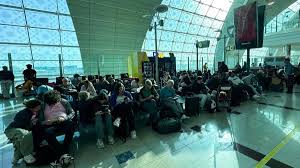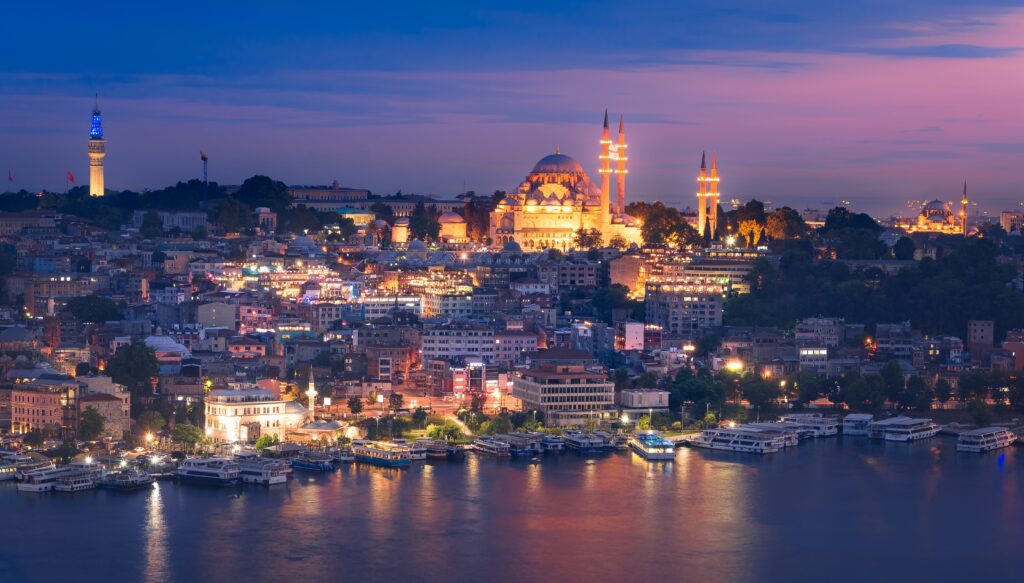
Brendan Sainsbury
“It used to be a garage,” Adrián Socorro told me as he opened the large doors of El Garabato, his art studio on Calle Narváez beside the San Juan River. “Then, around the time that Matanzas was preparing for its 325th anniversary in 2018, the city historian finally approved my project and I moved in.”
Inside was a warehouse-like room littered with the paraphernalia of an active workshop: plastic bottles and clusters of brushes, a multi-coloured palette, a half-finished sculpture of a cow-like animal hanging upside-down from the ceiling. Paintings were everywhere: hung on walls; propped on easels; stacked on tables. I spied dogs, chickens, flowers and nudes, all of them creatively drawn in a style that seemed to mix impressionism with the avant-garde.
“I paint from my own life and experience,” Socorro explained. “I don’t paint those pictures of old ladies smoking cigars that the tourists want to see.”
Socorro is from Matanzas, a port city wrapped around a deep, sheltered bay 90km east of Havana, Cuba. When I revisited in December 2021 after a three-year gap, small but innovative restaurants offered homemade pasta and snack-sized tacos. The riverside walkway of Calle Narváez was a glorious artistic esplanade embellished with astonishing sculptures: an emaciated pig standing atop a red balloon; a depiction of Cuban national hero, José Martí, with a sword in his mouth; pink stepladders and life-sized giraffes. Within the space of 300m, I wandered from Socorro’s studio-gallery past a music school, an art college and half a dozen imaginative bars and cafes.
It felt like a completely different city than the one I first travelled to in the late 1990s – then a scarred, dilapidated and semi-abandoned place, left to rot during the country’s economically challenging “Special Period”, a decade of austerity after the dissolution of the Soviet Union, whose subsidies had made up around 30% of the Cuban GNP. Back then, foreign visitors were whisked from the airport to swanky new resorts in the nearby town of Varadero, where Cuban guests were barred from entering resorts. Calle Narváez was a neglected warehouse district. The Parque Libertad, beautifully Botoxed by 2021, was dingy and unloved. Restaurants were practically non-existent. To me, the city resembled a sunken ship, a stricken Titanic whose damaged riches were hidden by decades of neglect.

“Piggy Bank” by Dariel Lozano Pérez is one of many sculptures along Calle Narváez (Credit: Brendan Sainsbury)
Now, it seems, there’s been an impressive turnaround for this one-time cultural giant.
Founded in 1693 on the orders of Spanish king Charles II, Matanzas quickly established itself as a port that grew wealthy, sadly, on the back of its profitable sugar plantations where rich Spanish landlords exploited enslaved people from West Africa. By the 1860s, it had morphed into the nation’s second largest city after Havana, and enamoured local authorities christened it the “Athens of Cuba” in honour of its elegant cultural life and abundance of home-grown poets and writers.
It felt like a completely different city than the one I first travelled to in the late 1990s
The moniker had merit. During the glory years of the 19th Century, classical theatres were built, and local writer José Jacinto Milanés established himself as Cuba’s finest playwright. The city hosted an 1881 Universal Exhibition promoting art and technology that attracted delegations from the US and Spain.
In the ensuing decades, Matanzas spawned a whole host of music genres, including the danzón, a slow syncopated partner dance first performed by Cuban bandleader, Miguel Faílde; and the mambo, an upbeat version of the danzón that fuelled a brief but intense American dance craze in the 1940s.

These restored buildings are among improvements in Matanzas (Credit: Brendan Sainsbury)
But the city’s culture wasn’t influenced solely by the ruling Hispanic and Latino people. With its large black population, freed from the shackles of slavery in 1886, Matanzas was, and still is, a cradle of African religion and tradition.
Cuba’s Santería religion, for example, is a syncretised melding of West African Yoruba and Catholic beliefs whose adherents worship a pantheon of orishas (sprits or deities) masked as Catholic saints. And Abakuá, a secretive Afro-Cuban, all-male mutual aid society, has origins in Nigeria and Cameroon. Both belief systems influenced rumba, the percussive black dance music fermented in Matanzas’ La Marina dock district in the 1880s and can still be heard in the city today.
After Cuba’s 1959 revolution, with the new regime implementing restrained socialist values, the importance of Matanzas as a cultural hub diminished. Its problems were exacerbated after Cuba’s Soviet benefactors collapsed in ’91, sending the economy into free fall, and were compounded further by the decline of the sugar industry in the 2000s. While tourism blossomed on the golden beaches of Varadero, and other Cuban cities such as Cienfuegos and Camagüey earned prestigious Unesco listings, Matanzas’ less obvious riches were ignored.
And then, finally, something changed. In 2018, the Cuban authorities, rallied in part by Eusebio Leal, the architect of Old Havana’s successful rehabilitation project in the 1990s and 2000s, decided to honour Matanzas’ 325th anniversary with a programme of recognition and restoration. Deteriorated buildings were touched up, three handsome hotels opened in and around centrally located Parque Libertad, and the iconic Sauto theatre – once one of the finest in Cuba – was restored to its 1860s high watermark after decades in the doldrums.

Teatro Sauto was restored to its iconic state it was known for in the 1860s (Credit: Brendan Sainsbury)
“Matanzas was revived and declared a patrimonial city,” said Socorro.” Visual changes became evident throughout the city.”
Much bigger changes were on the way, too. In 2019, Cuba’s largest art festival, the Biennial de la Habana, was lured to Matanzas for the first time, thanks to the influence and initiative of María Magdalena Campos Pons, a Matanzas-born artist now based in the US. It was the biggest event the city had seen since the 1881 Universal Exhibition.
“For years, I had been talking to people in Havana about bringing the Biennial to Matanzas,” explained Campos Pons, whose internationally recognised work is held in collections at the Museum of Modern Art in New York and the Victoria and Albert Museum in London. “So, when I was invited to be an exhibiting artist in 2019, I used my invitation to create a project for the city.”
The project, called Ríos Intermitentes (Intermittent Rivers), sought to shine a light on Matanzas’ creative community by exhibiting their work to local and visiting international artists. “Matanzas is both geographically and culturally full of drama and untold narratives,” explained Campos Pons. “But the city was abandoned and regarded as a sleeping beauty. That pejorative dismissing of Matanzas and its history was my departing point for Ríos Intermitentes.”
Despite crippling economic crises, Cuban artists have become highly adept at challenging accepted norms and pushing the envelope
The government might have kick-started Matanzas’ reawakening, but it was the city’s artists who shaped where it would go next. The Biennial, with its mix of performance art, outdoor sculpture, poetry readings and exhibitions in the city’s historic courthouse, transformed Matanzas.
“I think the work of a number of artists in the city who had been toiling very quietly and with little attention for years was behind the fundamental transformation,” said Campos Pons. “The fact that the 325th celebration took place during this period added a window of opportunity as the city was ready to undertake some indispensable restoration work.”
It was hard not to be impressed. Cuban art has always struck me as idiosyncratic and uniquely clever. In a country where direct dialogue about prickly political issues is often problematic, art is often nuanced and full of double meanings. Despite crippling economic crises, Cuban artists have become highly adept at challenging accepted norms and pushing the envelope.
“The Biennial mobilised the city,” said Socorro. “It marked us as a generation, and uncovered not only the talent that exists here, but the potential we possess as a region.”
Other members of the group of Biennial artists include photographer and conceptual artist Ernesto Millán, who spearheaded a community project at the festival called “White Sheets” in which he printed bedsheets and pillowcases with photographic images of Cuban motifs and gave them to 25 families to use in their daily lives. He then edited a video about how the sheets were utilised. For Millán, the project was both an interpretation of domestic Cuban life and a tribute to the families who participate in it.
Another innovator is 24-year-old Alejandro Vega Baró whose kaleidoscopic photography explores social problems revolving around memory, colonialism, political hegemonies and the relationship that contemporary societies have with their past and present.

Abounding culture brought Matanzas back to life, from art and architecture to restuarants and music (Credit: Brendan Sainsbury)
It wasn’t just art that was propelling Matanzas back into the limelight. The whole cultural sphere was flowering, from architecture to music. Two nights running, I attended live musical performances of international calibre: a classical trio at the refurbished José White concert hall in Parque Libertad, and a rendition of Spanish zarzuelas (light opera) in the exquisite Sauto theatre.
Galvanised by the positive changes, the city was alive with a buzz and buoyancy not seen for generations. Young people crowded into artistically curated cafes; murals and art installations turned heads in urban plazas; and there was talk of a new tour bus linking Matanzas to Varadero. More importantly, after the success of 2019, the Biennial is scheduled to return to Matanzas this year under Campos Pons’ expert guidance.
“We are undertaking a project that will focus on restoring and protecting Matanzas’ ecological identity,” she said. “Gardening and landscape will be the centrepiece of 2022 Ríos Intermitentes.”
The plan is to develop the banks of the city’s other river, the Yumurí, which skirts La Marina, a neglected district where Matanzas’ black population has historically resided.
“We aspire to be a city that is aesthetically and economically sustainable and worthy of living in,” Campos Pons concluded. “The Matanzas you will see in 2030 will be radically different because of what we started in 2019.”
Courtesy: BBC
The post Matanzas: The rebirth of Cuba’s abandoned cultural hub appeared first on The Frontier Post.








